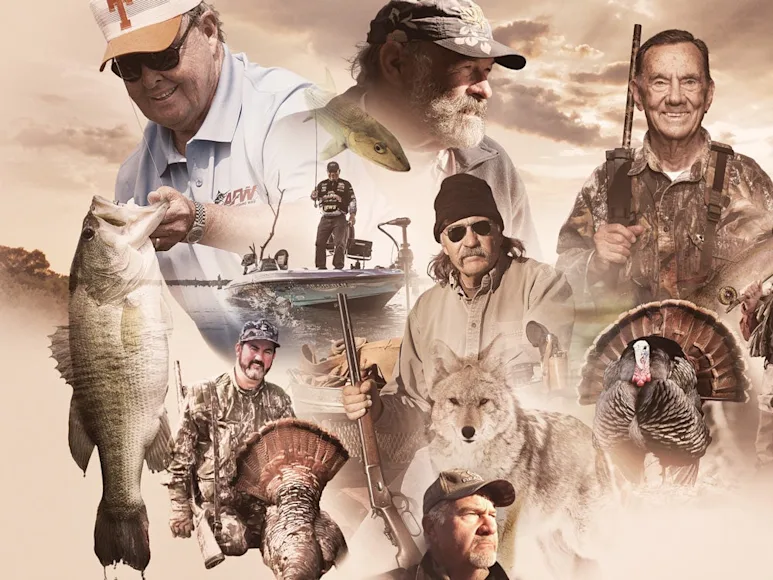You’ve been watching them on TV for decades. You’ve been reading about their techniques since you were a kid. Now, we’ve asked them—some of the most respected outdoor legends in America—to pass on the one piece of hunting and fishing wisdom that will make you a more skilled outdoorsman this season and for years to come.
Bill Dance
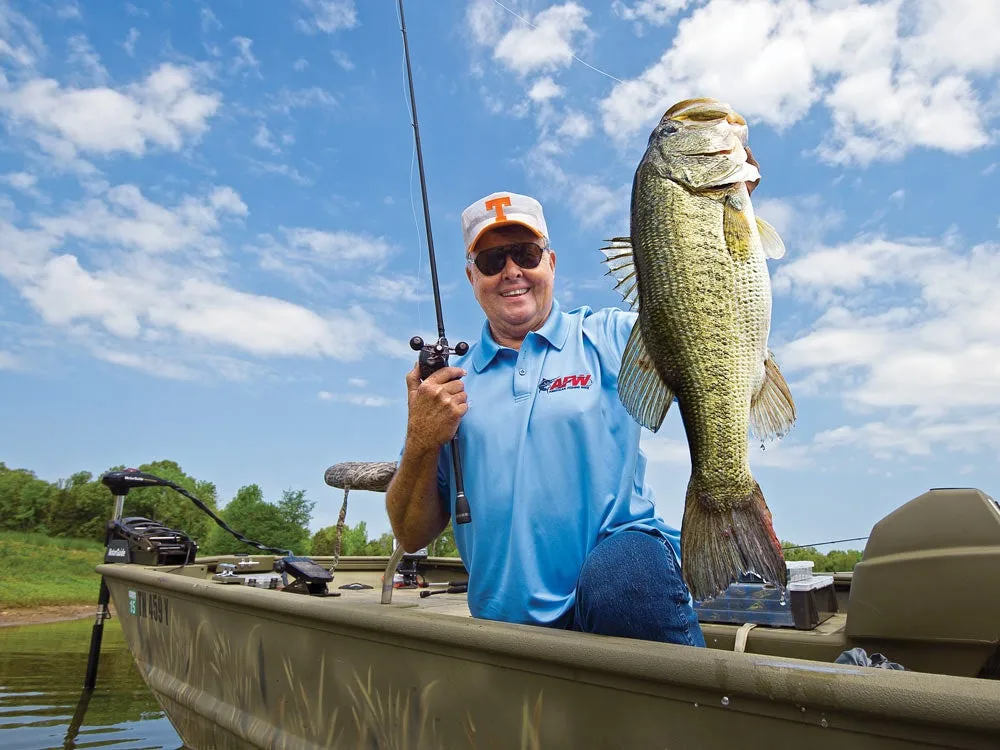
Bill Dance, a member of the IGFA Hall of Fame, holds 23 National Bass Fishing titles and seven B.A.S.S. titles. Bill Buckley
Bill Dance’s Tips for Catching Trophy Bass
Whether you bass fish or not—and whether you own a TV or not—you know Bill Dance
. Arguably the most recognizable angler in America, Dance is also one of the most gracious, eager to share what he’s learned in well over 50 years of bass fishing. In that time, he’s caught lots of true hogs, and in doing so, he’s noticed a pattern that might surprise most anglers.
“When I think back on the really big bass I’ve been fortunate enough to catch, most have been caught on quiet, slow-moving baits,” Dance says. “Smell and sound are important in some situations, but not nearly as important as sight. Big bass rely on what their eyes tell them, not what their noses and ears relate.”
A big bass will certainly clobber a noisy lure, Dance acknowledges, but he feels that many of those strikes come more out of a protective instinct than out of true feeding behavior. When you’re trying to get a large, smart bass to feed, he believes, noise will often make a bait seem less natural.
“It’s smart to curtail all noises that are abnormal to this fish,” he says. “Lures that create no negative cues have less chance of rejection. Baits like worms, tubes, jigs, grubs, and lizards are going to be much more effective than those that shake, rattle, and roll.”
Dance’s personal best bass weighed 14.1 pounds and was caught in Tennessee. The monster ate a spinnerbait that Dance was letting slowly free-fall along the edge of a creek channel in 10 feet of water. And though the majority of Dance’s top-end bass fell for quiet methods of presentation, he is quick to point out that he wasn’t on a trophy hunt for very many of them. “I wasn’t really targeting big fish when I caught big fish,” he says. “I just went fishing.”
Roland Martin

Roland Martin has caught more trophy bass than the average angler could even fathom, and he’s done so during a decades-long tournament career that spanned the country. Adam Cruft
Roland Martin’s Tips for Fishing a New Lake
has caught more trophy bass than the average angler could even fathom, and he’s done so during a decades-long tournament career that spanned the country. These days he’s known as the king of the big-bass scene in central Florida, but knowing how to produce in this part of the U.S. isn’t enough to help you win countless events thousands of miles away. Martin says anglers fishing unfamiliar waters can’t get caught up in the idea that all the bass are doing exactly the same thing.
“I don’t care if it’s summer or winter, if it’s a lake in Connecticut or California. On any given day, there will always be more than one pattern in existence,” Martin says. “And generally speaking, I can find a power fishing technique that reveals a pattern on any lake at any time of year.”
Power fishing means Martin opts to cover lots of water with heavy tackle and larger baits rather than putting all his eggs in the finesse fishing basket or looking for a group of deep or suspended fish. Part of the reason for this is that he learned the game long before advantages like side-scanning sonar existed, so power fishing is simply more familiar. It’s also well proven, and the trick to doing it effectively, he says, is to stick to cover.
“At any lake in the country, I’ll look for the heaviest, nastiest cover I can find,” he says. “That can be anything from boat docks to trees to rocks, logs, and brush. I’ll have a jig, a worm, a spinnerbait, a shallow-running crankbait, and a topwater tied on and ready for any situation. Some guys say they can go to any lake in the world and use a little drop shot on a point and they can always catch fish. That might be true, but they’re often catching the smaller fish. Power fishing catches more big ones in the long run.”
Dave Whitlock
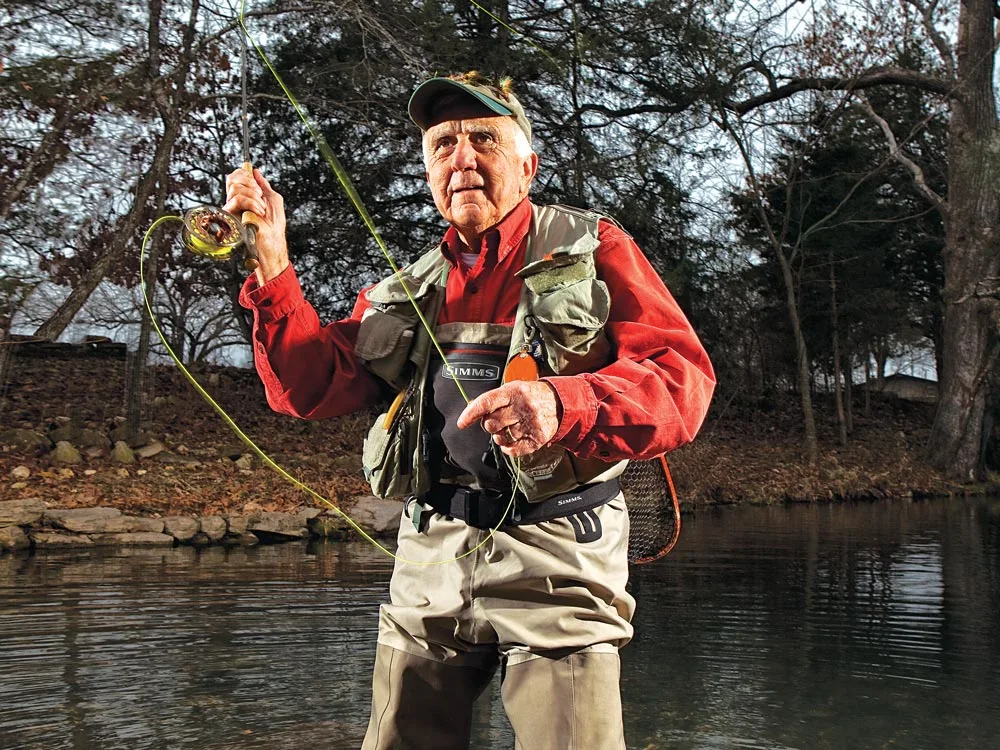
Dave Whitlock has created many fly patterns that have practically become standard issue. Chris Mueller
Dave Whitlock’s Tips on Dry Fly Selection
, who passed away in 2023, had a fly-fishing career that spanned more than 60 years. In that time he wrote thousands of articles, authored some of the most influential books on the sport, and designed flies that have become so popular you probably have some in your box right now. Whitlock was also one of the most respected fly-fishing instructors in the country, and while he helped students perfect everything from loops to distance, one of the biggest hang-ups he saw has nothing to do with casting or drifting.
“One of the questions I get most often is simply which dry fly to choose,” Whitlock said. “A lot of folks just aren’t really clear about entomology, and they feel the need to match the bugs as closely and realistically as possible. You rarely have to do that.”
Above all other factors in dry-fly selection, regardless of what river you’re on in any part of the country, size will always matter most. Even though matching bug size seems easy, Whitlock said that this is still difficult for some anglers to grasp.
“If you err in terms of fly size selection, you want to err and be too small rather than too large,” said Whitlock. “But that’s not a human strong point. Most people will usually think the bigger, the better.”
According to Whitlock, a few basic “suggestive” dry-fly patterns in various sizes will get you by most of the time anywhere in the world. Not surprisingly, the Parachute Adams is one of them, because it matches almost any dun mayfly or caddis you’ll come across. The other choices in Whitlock’s top three, however, may not be what you would have guessed.
“The Royal Wulff is basically an attractor fly, and while it’s not naturally colored like an insect, it’s real buggy,” he said. “Most fish are prone to coming up to take something that looks like food even though it’s not an exact imitation. And hoppers are good searching flies—anything from a salmon to a brook trout will take a whack at one, even in winter, because it just looks like something darn good to eat.”
Tom Kelly
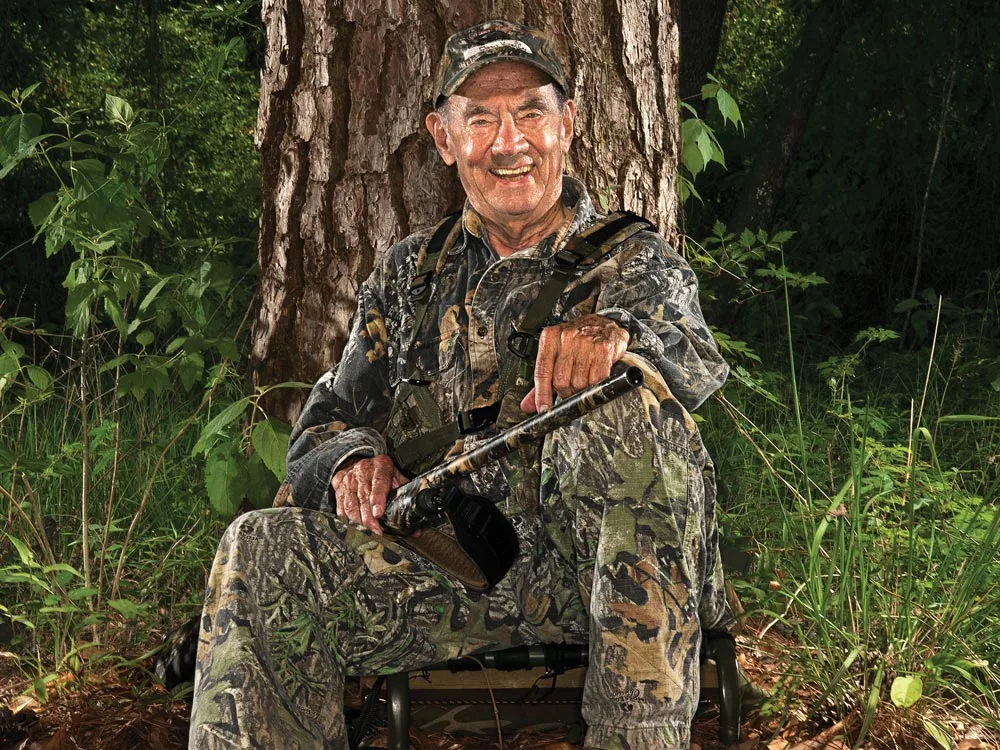
Given his choice, Tom Kelly prefers to hunt during the final days of spring turkey season. Tom Kelly
Tom Kelly’s Tips for Hunting Late Season Turkeys
says that at 90 years old, he doesn’t even take a chance on buying green bananas. But it’s a safe bet few have seen more Eastern wild turkeys called to the gun than he has. The author of numerous books and articles, Kelly entertains turkey hunters with his renowned wit and writing skills to this day.
“Turkey hunting is the only thing I know of that’s as much fun at 80 as it was at 20,” he says. “I don’t care how often you go or how many you kill. You can hunt them on your last day and think, ‘By God, I’ve never seen one do that before.’”
When Kelly first began turkey hunting, many thought there was no future for the sport. Only a few Southern states had short seasons. Of course, just the opposite happened. The restoration of the wild turkey may be the country’s best conservation success story.
Kelly has watched tactics change as dramatically as the turkey populations. “I saw my first mouth yelper in 1952 or ’53. They made them out of lead and rubber. As many years as I spent sucking on lead turkey yelpers, I may be the most advanced case of lead poisoning in the country,” he says.
But some things haven’t changed. Kelly has long been a late-season fanatic. “I don’t even like to talk about the late season because it’s absolutely the best hunting of the year. When you’re out there poking around, trying to make a bird gobble—and then one does gobble, especially in the afternoon—you’d better sit down and hide next to whatever sapling is handy. While you’re fooling around and cutting bushes and sticking up nets, he’s already walked in 40 or 50 yards closer.”
Hank Parker
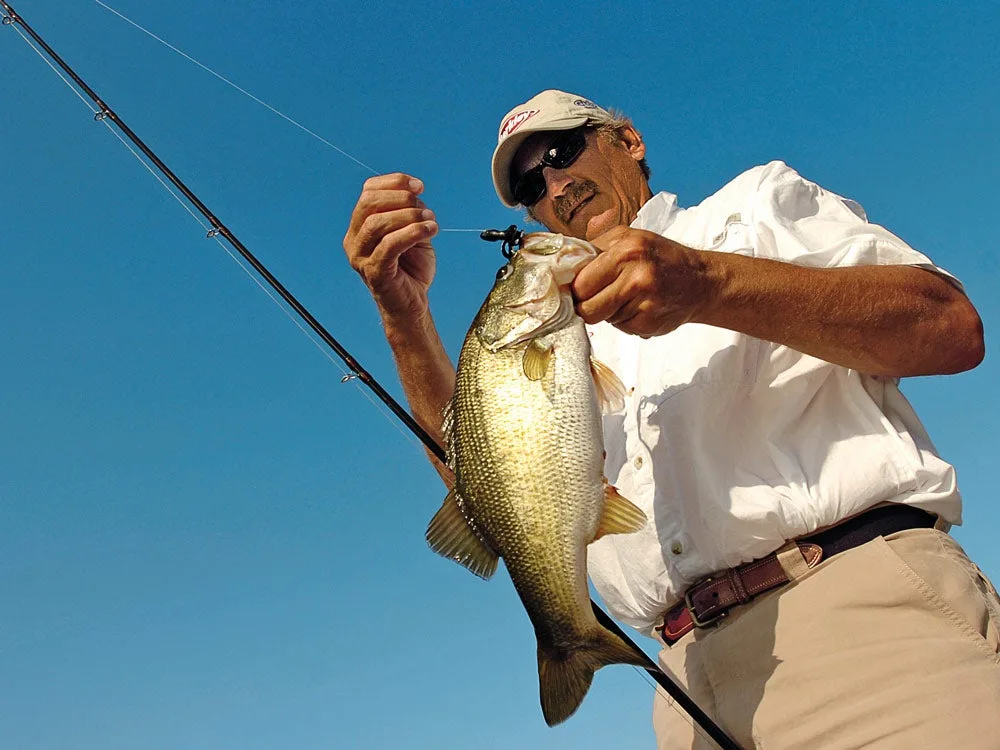
Hank Parker thinks that many lures considered “obsolete” by some still have a time and a place. David J. Sams
Hank Parker on Following Bass Fishing Trends
In Hank Parker
‘s long career as a tournament angler and TV host, he’s seen loads of bass fishing trends come and go. No matter how gimmicky they might have seemed at the time, however, Parker doesn’t believe that any of them should be utterly forgotten.
“I’ve always looked at lures like tools, and you customize a tool to fit a situation,” Parker says. “I remember guys laughing at the Flying Lure, but I also remember having my fanny wore out by a guy using them to get under cedar bushes. He had the best tool for the job, and if you break those lures back out today, they’re still good tools.”
Like many bass anglers, Parker believes that although catch-and-release has been instrumental in preserving the fishery, it has also made bass tougher to catch. The more bass are hooked, the smarter they become, which is why he says trends and fads in bass fishing will never go away, and wise anglers will keep up with them. Of the more current trends, for Parker, none is more important for a modern bass angler to know than drop-shotting.
“Let’s look at Kentucky Lake,” Parker says. “It’s one of the best lakes in the country and one of my favorites, but it’s also one of the most heavily pressured. Drop-shotting has changed everything. The fish are always there and in big numbers, but you can’t just pull up and catch them power fishing the way you used to. These days you often have to finesse them to catch them.”
Right now drop-shotting may help you score more and bigger bass on pressured lakes, but Parker says even that method will continue to evolve. “You’ve got to keep up with the fish,” he says. “Be willing to change up and try new offerings all the time.”
Brad Harris

When Brad Harris began bowhunting back in the 1970s, most deer hunters were of the opinion that whitetails were all but silent—and that sitting still without making a sound was the only way to kill one. Adam Cruft
Brad Harris’s Tips on How to Call Deer
When Brad Harris began bowhunting back in the 1970s, most deer hunters were of the opinion that whitetails were all but silent—and that sitting still without making a sound was the only way to kill one. Harris tried grunting at a 6-point buck one evening with his voice because a buddy at work had told him that he’d heard a deer grunt.
“That buck walked right to me, and I missed him,” Harris says. “But I’d found the sound I was after.” In the early ’80s, Harris went to work for the Lohman game-call company, and the first commercial grunt call was born. Harris hosted dozens of how-to, fair-chase hunting videos covering everything from squirrels and turkeys to whitetails and predators. He’s no longer in the game-call business, but his original call design hasn’t much changed.
“People used to be skeptical of deer calling. I can remember giving seminars, and having guys in the audience laugh at me,” he says. “Now, everyone hears bucks grunt, mainly because there are 50 times more deer now. But even today, I think a lot of hunters are too passive when calling deer.”
Harris feels that just about any whitetail is callable, but a buck that’s up and cruising is prime. “He’s covering ground, looking for action. But there’s a lot of bad advice out there when it comes to deer calling. I’ve heard people say to never call a buck that’s looking at you. That’s nonsense. When I get him to pick his head up, I want to confirm that he heard another deer,” he says. “You’ve got him hooked. Reel him in. I’ve always been an aggressive caller and hunter. I hunt by the seat of my pants. I bump and spook some stuff, but I believe I kill more critters in the long run by being aggressive than by being passive.”
Wally Marshall
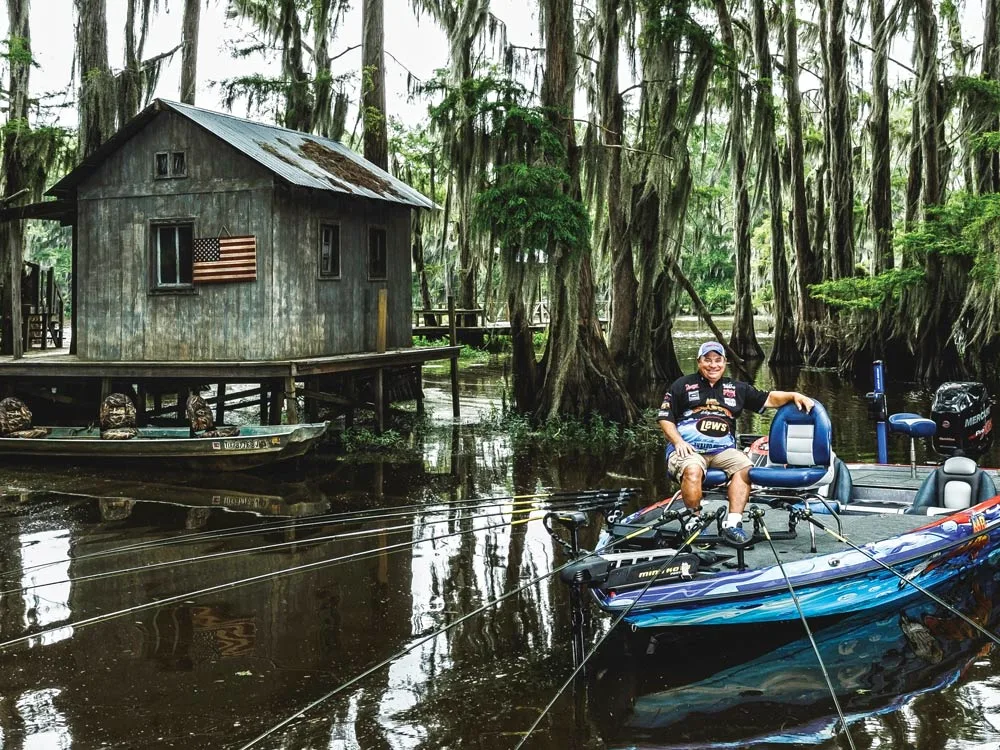
Wally Marshall was the first crappie guide on Lake Fork, which remains a renowned fishery. Nate Luke
Wally Marshall on How to Fish for Pressured Crappie
Lake Fork in Texas is widely known as one of the best big crappie lakes in the country, and Wally Marshall—a.k.a. “Mr. Crappie”
—was the first guide-for-hire to ever chase them on this body of water. Much has changed in Marshall’s decades-long career as a tournament angler, TV personality, and crappie fishing educator. According to him, one of the most noticeable differences is in boat traffic.
“I would say there has to be at least 10 times as many boats on the water chasing crappies now as there were in my early days,” Marshall says. “And thanks in part to modern technology, there are no secrets anymore.”
When Marshall was first starting out, he could plant a stake bed in a lake and rest assured he’d be the only one fishing it. Thanks to side-scanning sonar, planted structure (where legal) can be found in little time and with little effort. Because there are so many more anglers gunning for the same areas, Marshall says a successful angler in this day and age must be versatile.
“I’ve heard guys say, ‘I’ll never troll! I only fish one-pole,’” Marshall says. “Guess what? You go to a lake with little structure, you have to be able to cover water to catch fish. You’re going to have to troll sometimes, know how to one-pole, and be able to shoot docks. Even knowing when to use a simple jig and bobber can be critical.”
Although Marshall doesn’t believe pressure has altered the behavior of the fish, environmental changes can have an impact. Versatility combats these curveballs as well. “Lakes and rivers change,” he says. “Maybe this year you killed them in the lily pads, but next year there are no lily pads. Adapting might mean using a whole new technique.”
Flip Pallot
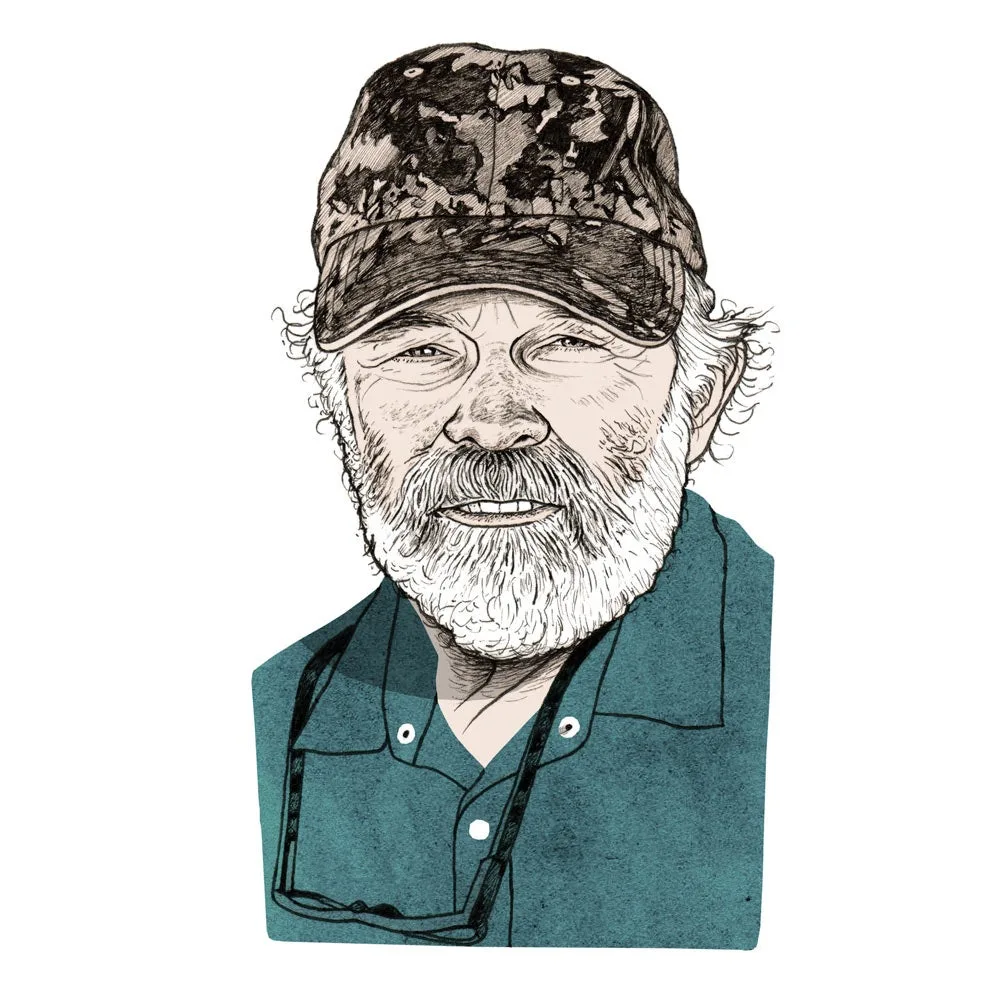
In Pallot’s early days of fishing the Keys, bonefishing was “better than the Bahamas,” as he puts it. Adam Cruft
Flip Pallot on Bonefishing in the Florida Keys
From snook to permit, tarpon to seatrout, an incredible number of species draw thousands of anglers to the Florida Keys’ skinny water every year. Angling legend and South Florida native Flip Pallot
has caught them all on a fly rod, and though he loves every fish that swims in the backcountry, bonefish have always been one of his favorites. In Pallot’s early days of fishing the Keys, bonefishing was “better than the Bahamas,” as he puts it. Much has changed since then. Between environmental issues reducing habitat and a spike in angling pressure, a Keys bone on a fly has become one of the hardest species to add to your bucket list.
“You have to invest a lot of sweat equity to catch a bonefish in the Keys these days,” Pallot says. “But it’s possible. Those individual fish are still there, and as long as they are, there will be anglers willing to bleed to catch them.”
This challenge may not be for everyone, but the payout is that if you connect with a Keys bone, there’s a good chance it will be the biggest bonefish of your life. To date, the Keys have produced 20 line-class and tippet IGFA bonefish records.
For the dedicated angler seeking what has become one of the ultimate flats prizes, it’s important to understand that the fish still prowling the Keys flats don’t get big by being dumb. Fooling one on a fly can boil down to minutiae like skipping head cement on your flies to reduce unnatural smells.
“You have to be ever more technical,” Pallot says. “The guys who succeed will be mindful of things like building longer leaders and even scaling back fly-line size to help in not spooking fish. And they’ll be out there looking for that one big one when it’s raining and when it ain’t.”
Wyman Meinzer
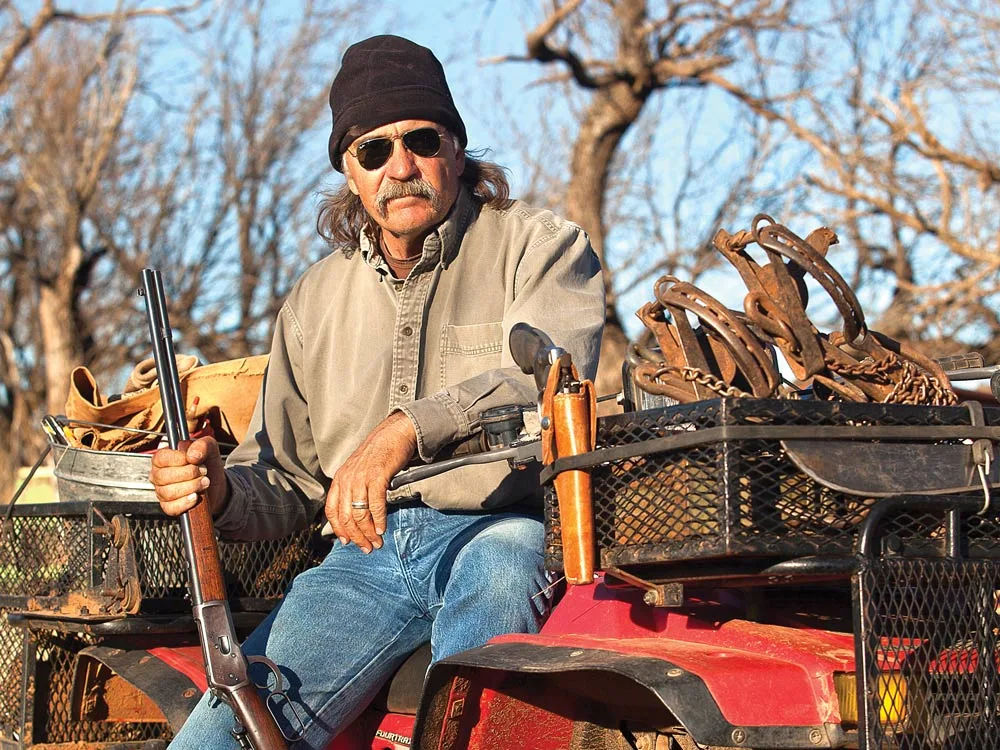
Wyman Meinzer has kept records of his predator calling for more than 50 years. Wyman Meinzer
Wyman Meinzer on How to Play the Wind for Coyotes
In the past 50 years, predator calling has evolved from a mysterious art form to a major off-season sport, with modern hunters wielding electronic callers, motorized decoys, and specialized varmint rifles.
You could call Wyman Meinzer
one of the original artists. Few have called in more coyotes than him, and surely no one has kept better records of it. Meinzer is an old-school hunter. He shuns camouflage in favor of green Filson wool pants, a dark shirt, and shadows. And he doesn’t use electronic calls or decoys. He makes his own open-reed predator calls, most of which mimic a cottontail in distress.
“I have kept notes for over 50 years on my coyote calling,” he says. “Everything about how I hunt them is quick and efficient. I like to sit in an elevated position, in a deep shadow. I face into the wind with my back against a tree. I don’t want to pollute the area where the coyote will approach with my scent while placing all kinds of electronic gimmicks.”
Meinzer’s records show the average response time for a coyote is fast, usually four to eight minutes. The shots are usually around 75 yards away. And even in West Texas, where coyotes seem to live everywhere, the response rate most days is less than 40 percent (Meinzer defines response as seeing a coyote, whether he gets a shot or not). Making multiple setups is the key to consistent success.
Many predator hunters have been taught that you should always set up with a big downwind shooting lane. But Meinzer says that’s a last resort at best: “If they have the opportunity, coyotes will circle you, and if they cut your wind, they’re usually gone long before you can get a shot. I like to play the lay of the land to force them to come from a certain direction, either from upwind or crosswind.”
Harold Knight
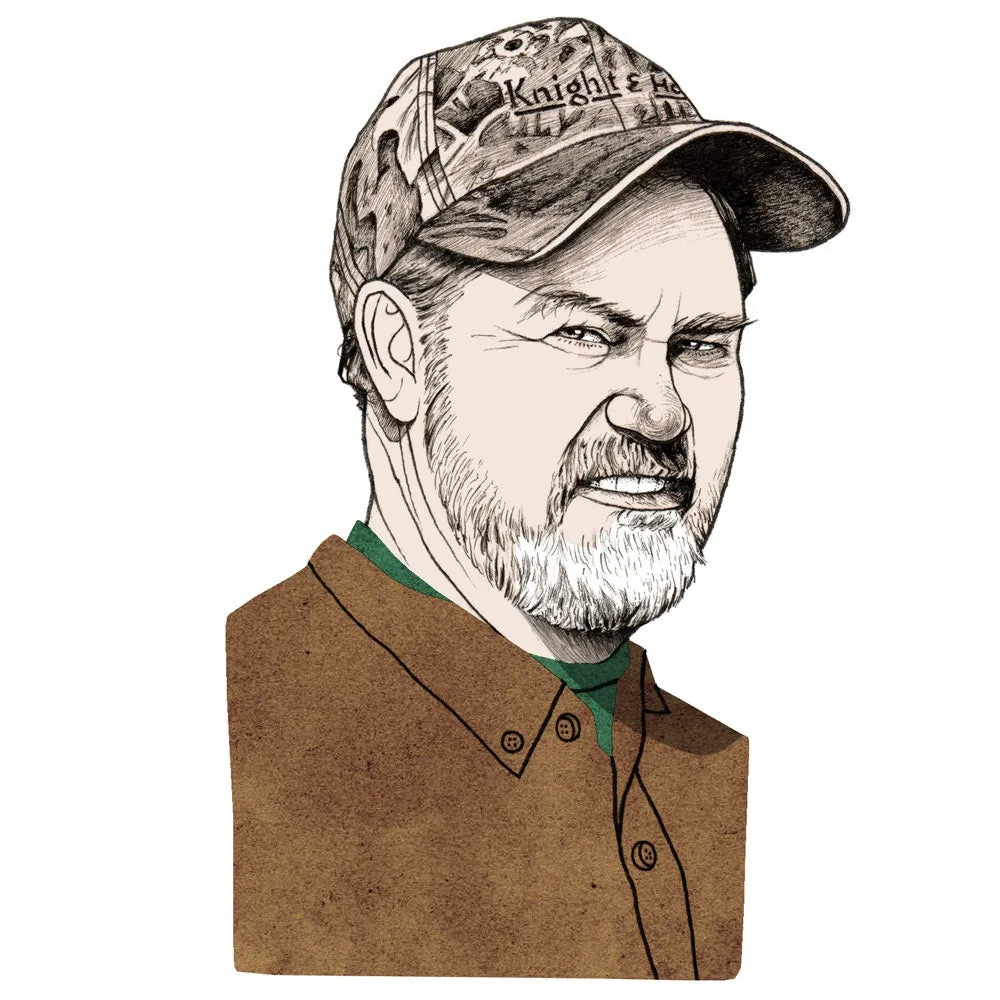
When Harold Knight was growing up, the only huntable turkey population in Kentucky lived on the peninsula between the Tennessee and Cumberland Rivers, a place now known as Land Between the Lakes. Adam Cruft
Harold Knight’s Tips for Understanding Turkey Behavior
When Harold Knight was growing up, the only huntable turkey population in Kentucky lived on the peninsula between the Tennessee and Cumberland Rivers, a place now known as Land Between the Lakes. “Back when I first started, if you messed a bird up, you might spend the whole season thinking about it,” Knight says. “You had to do everything so carefully. Now, if I mess one up, I’ll be on another one in two hours. We’re living in the heyday right now.”
Because of the high numbers of turkeys, hunting tactics are more aggressive now than they were back then. Fanning and reaping have become incredibly popular—even though some hunters vehemently oppose it. “It’s really amazed me to see how a gobbler will react to a fan,” he says. “It’d be easy for me to sit back and condemn it, but I’m not going to do that. It’s legal most places, and lots of hunters have a ball doing it. My favorite way to kill a turkey is to sit against a tree and call him to me, but I’ve fanned them in, and it’s very effective. I’d just say if you’re going to hunt like that, be extra cautious.”
Whether you prefer calling a turkey in or charging him in a field behind a fan, Knight says, you’ll be a better hunter by learning as much about wild turkeys as you can: “Why does he come to that fan? Why does he gobble at owls and crows, and why does he like to roost over water? Why does he like to scratch in cow pies? A turkey’s habits are different than a deer’s, and taking the time to learn as much as you can about them makes it all more enjoyable—and it’ll make you a better hunter, too.”

